‹ paintings
The Art of Eddie Burrup
1940s — 2000, a continuum
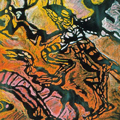 |
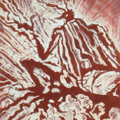 |
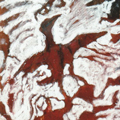 |
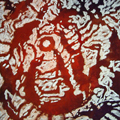 |
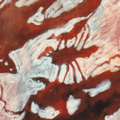 |
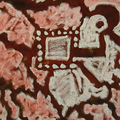 |
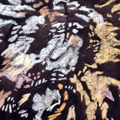 |
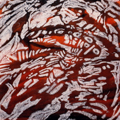 |
 |
| next > | ||
1 to 9 of 50 artworks |
||
The extensive body of work, visual and written, created between the years 1994 and 2000 that comprises The Art of Eddie Burrup is the final phase in the evolution of Elizabeth Durack’s oeuvre. In spirit and purpose it aligns with all that came before; it can be traced back some 60 years. It was nascent in the 1930s and probably first emerged in recorded visual form via The Whirlwind drawings and paintings of 1940–41. Towards the end of her life — through her daemon, Eddie Burrup — Elizabeth Durack distilled a lifetime of living and learning, of giving and taking, of exploring, reflecting upon and of recreating lost worlds of an ancient culture. Her art is homage to this culture. It also honours and fulfills an exceptional talent. |
||
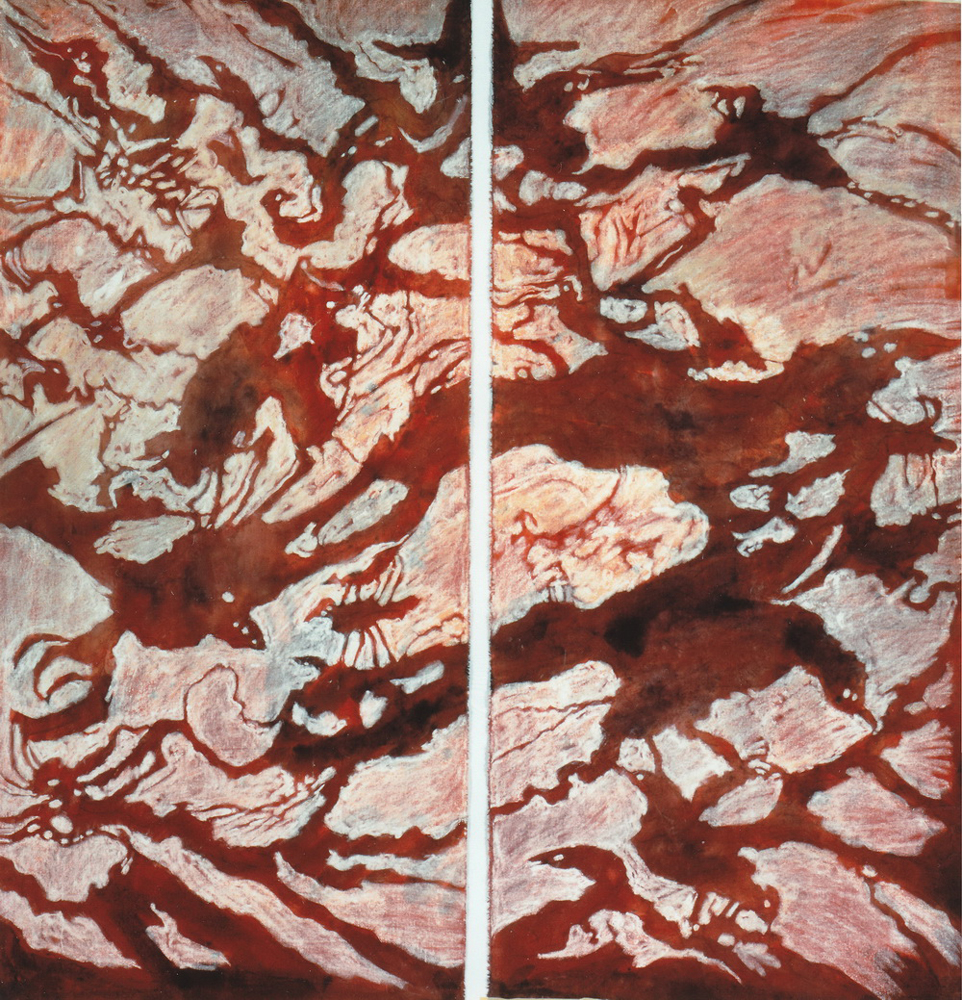
- Over in the Limestone
- 1997
- mixed media on canvas
- diptych, each 190 x 92 cm
- exhibited: Rebecca Hossack Gallery, London, July 2000
- collection: estate of Elizabeth Durack
- Eddie's title
Wet weather time, all t'em ol'fella
'im climb up b'la limestone
look out bush t'bacco —
Find 'em dry place
make'm picture
big one, pretty one —
Fish s'down b'la limestone —
might be debbil–debbil
Limestone no place for lubra —
limestone close-off for woman
an' young fella ...
Artist's note
The limestone is often referred to by the artist. It is a generic term for what is both a real and an imaginary place. Limestone and more often sandstone outcrops form the background surface for the ancient engravings of the Pilbara and the paintings of Spirit Beings as seen in Kimberley caves.
Marine fossils often occur in the limestone and pituri, or bush tobacco, is found there. This thyme-like herb, when soaked, rolled into balls and chewed, has mild hallucinatory properties. 'The limestone' was out of bounds for women and children.